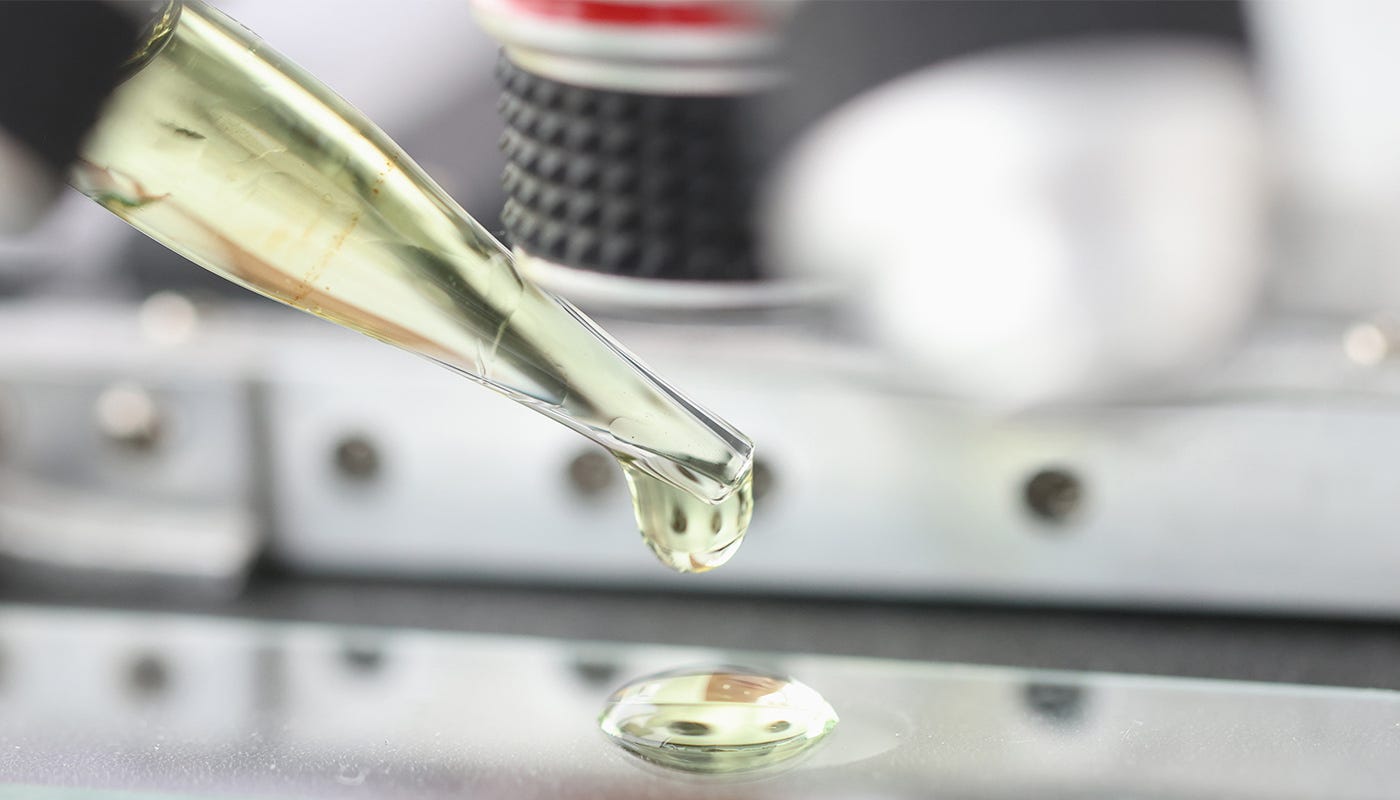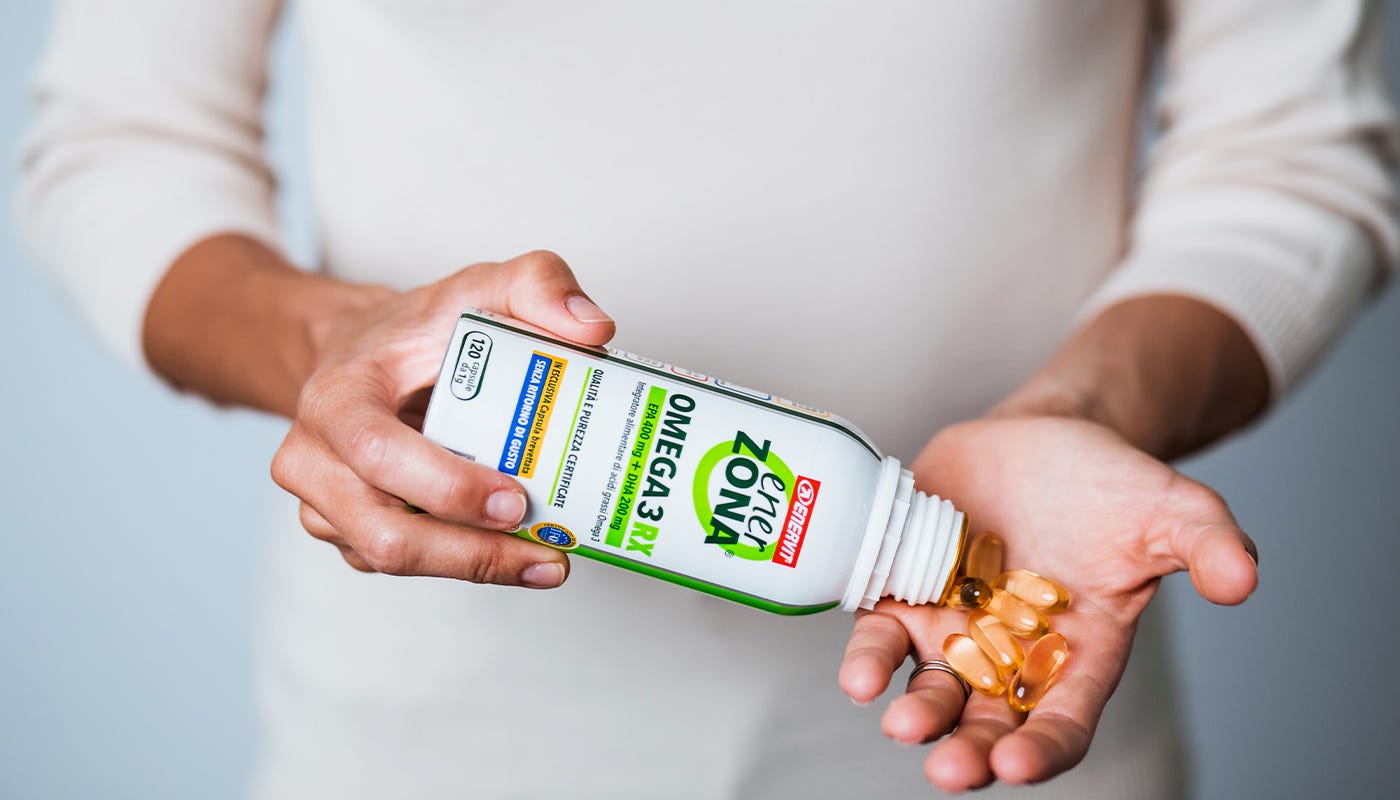WELLBEING
Omega-3: what are they and what are they for?
Omega-3 fatty acids: what are they and what are they for?
Elena Casiraghi - Equipe Enervit
Essential fatty acids are crucial nutrients that our body cannot produce on its own, so they must be obtained through diet. Among these, omega-3s are an important type of polyunsaturated fatty acids.
What are omega-3s and what do they do?
Omega-3s are long-chain polyunsaturated fatty acids with a specific molecular structure that gives them unique properties.
They are vital for several biological functions, including:
- Heart health
- Brain function
- Vision
They also help maintain:
- Normal blood pressure
- Healthy triglyceride levels
Overall, they support general well-being.
In this article, we will explore various topics, starting with the direct benefits of omega-3s, followed by recent studies on their potential role in injury prevention and muscle strength support. We will also analyse the foods that contain omega-3s, their main sources, and provide guidance on how to choose the right omega-3 supplement.
Table of contents
- Omega-3s: EPA e DHA
- Omega-3s and Their Benefits for the Body
- New Studies on Omega-3s
- Foods That Contain Omega-3s
- When and How to Take Omega-3s
- How to Choose Your Omega-3 Supplement
- Conclusions

Omega-3s: EPA e DHA
To fully understand the importance of omega-3 fatty acids, it's crucial to clarify a key concept: there are substances that the body cannot synthesize on its own, necessitating their intake through diet. Omega-3s fall into this category.
They are a family of essential fatty acids, with the most important being eicosapentaenoic acid (EPA) and docosahexaenoic acid (DHA). Alpha-linolenic acid (ALA), a less efficient precursor of EPA and DHA, is also part of the omega-3 family and is primarily found in plant sources like flaxseeds, hemp, and chia seeds.
EPA and DHA are the two most studied omega-3s, primarily found in marine sources, especially in cold-water fish.
- EPA (Eicosapentaenoic acid), plays a vital role in supporting cardiovascular function and in the production of eicosanoids, molecules that help regulate the inflammatory response.
- DHA (Docosahexaenoic acid) is a key structural component of the brain, the retina, and other parts of the nervous system. It is essential for cognitive function, vision, and neurological development.
EPA and DHA work synergistically; when consumed in a specific ratio of 2:1, they fully unlock their benefits.
Omega-3 e omega-6To ensure overall well-being and maintain optimal efficiency, we need to achieve a proper balance between omega-3 and omega-6 fatty acids. Omega-6s, such as linoleic acid, play important roles, particularly in regulating the body's inflammatory response. However, this balance is only maintained when omega-6s are counterbalanced by an adequate intake of omega-3s. The ideal dietary ratio of omega-3 to omega-6 is generally considered to be between 1:1 and 1:4. |
Omega-3s and their Benefits
Omega-3s provide numerous benefits essential for overall well-being. The main benefits relate to heart health, brain function, vision, and the regulation of triglycerides and blood pressure. Let's explore them in detail.
Omega-3s: Benefits for the heart
Various scientific studies have confirmed the positive effects of omega-3 fatty acids on cardiac function, attributed to their role in cell membranes.
The daily intake needed to achieve this benefit is 250 mg of EPA and DHA.
Omega-3s: Benefits for the brain
One-fifth of our brain's weight is composed of docosahexaenoic acid (DHA), which plays a critical role in nerve signal transmission. Numerous studies highlight the correlation between cognitive efficiency and adequate omega-3 levels in the brain.
The recommended daily intake is 250 mg of DHA.
Omega-3: Benefits for vision
Omega-3 fatty acids are an essential component of the retina, the thin membrane lining the inner surface of the eye. Additionally, due to the rich vascularization of the eyes, omega-3s help maintain capillary elasticity.
The daily intake required is 250 mg of DHA.
Omega-3: Benefits for blood pressure
According to scientific literature, omega-3 fatty acids influence blood pressure by affecting the elasticity of blood vessel walls, thereby regulating their dilation. The positive impact of omega-3s primarily involves controlling substances like prostaglandins, which decrease artery diameter, leading to increased blood pressure.
The daily intake for this benefit is 3 g of EPA and DHA.
Omega-3: Benefits for triglyceride control
Adequate levels of omega-3s play an important role in regulating blood triglycerides. Numerous studies have shown that long-chain omega-3s (EPA and DHA) help maintain normal triglyceride levels, measured both fasting and post-meal. Specifically, EPA and DHA are involved in lipid metabolism, helping to reduce triglyceride production and improve overall fat metabolism in the body.
The daily intake required for this benefit is 2 g of EPA and DHA.
New studies on Omega-3s
Injury prevention and muscle strength
Omega-3s appear to play an important role in preventing sports injuries. A recent study by the Equipe Enervit involving over 200 runners found a strong correlation between the risk of overuse injuries and low levels of EPA and DHA in the blood.
Another emerging area of research focuses on preserving muscle mass and tone: Ongoing studies suggest a link between regular physical activity, omega-3 intake, and high-quality protein consumption in combating muscle loss, particularly after the age of 50.
Foods That Contain Omega-3s
Omega-3s are primarily found in both animal and plant-based foods.

Animal Sources
Cold-water fish, such as salmon, mackerel, sardines, and anchovies, are particularly rich in omega-3s, providing high concentrations of EPA and DHA. To meet the recommended daily intake of omega-3s, it's important to consume these fish regularly, aiming for about 100 to 300 grams of fresh fish daily. However, a significant factor to consider is the increasing pollution in oceans, which can lead to larger predatory fish containing harmful substances like mercury, microplastics, pesticides, and PCBs (polychlorinated biphenyls). Therefore, those looking to increase their fish consumption should carefully choose fish species, limiting intake of larger fish like tuna and swordfish.
Plant sources
Foods like flaxseeds, chia seeds, and nuts provide ALA (alpha-linolenic acid), a "lesser" form of plant-based omega-3. These plant sources can be added to salads and dishes to boost total omega-3 intake. However, it's important to note that our bodies convert ALA to EPA and DHA rather inefficiently, so it cannot be considered an ideal source. For perspective, to obtain 2 grams of EPA and DHA, one would need to consume about 200 grams of flaxseeds or 500 grams of walnuts daily.

When and how to take omega-3s: Dosages and timing
Diet should always be considered the optimal source for essential nutrient intake. However, supplementation can be a practical and safe alternative, especially in cases of reduced intake (when we cannot consume the required amounts through regular dietary habits) or increased needs (when we require higher quantities of a particular nutrient to maintain well-being). In such cases, supplementation can help achieve optimal EPA and DHA intake.
According to the EFSA (European Food Safety Authority), to obtain the benefits offered by omega-3s, the following daily intakes are recommended:
- Normal heart function: 250 mg of EPA and DHA
- Brain function: 250 mg of DHA
- Vision: 250 mg of DHA
- Normal blood pressure: 3 g of EPA and DHA
- Normal triglyceride levels: 2 g of EPA and DHA
When to take Omega-3s?
Ideally, omega-3s should be taken with meals, to enhance absorption.
How long until Omega-3s take effect?
Benefits may begin to be noticeable after a few weeks of regular intake.
How long to take Omega-3s?
A prolonged intake is recommended, with the dosage adjustable based on results and guidance from a healthcare professional.
The importance of Omega-3s in the Zone Diet
In the Zone Diet, omega-3s play a crucial role, alongside physical activity and a balanced, nutritious diet. According to science, an adequate intake of omega-3s is essential for achieving an optimal nutritional balance.
How to choose your omega-3 supplement
To ensure omega-3 supplements deliver the desired benefits, they should meet specific quality standards.
The first consideration is the ratio of EPA to DHA, the primary long-chain fatty acids in omega-3s. A quality omega-3 supplement should have a 2:1 ratio of EPA to DHA, with EPA in double the concentration of DHA.
Another key factor is the purity of the supplement. For top quality, it’s essential to choose products certified by recognized, independent bodies. Key certifications include:
- IFOS (International Fish Oil Standard): rates products that meet strict standards for purity and quality, with a maximum score of 5 stars.
- Marin Trust: ensures a responsible supply and processing chain.
- Friend of the Sea: certifies respect and sustainability across the entire production chain.
High-quality omega-3 supplements should also:
- Be sourced from molecular distillation, a process that purifies fatty acids from pollutants and contaminants.
- Contain a total omega-3 concentration of at least 75%, to ensure an ideal dose of these essential nutrients.
- Provide at least 60% EPA and DHA in a 2:1 ratio, with EPA at twice the concentration of DHA.

Omega-3 Capsules
Omega-3 capsules are among the most popular and convenient ways to consume these essential fatty acids. Soft capsules are especially valued for easy intake. The best capsules use patented Entericare™ technology, which ensures optimal oil release in the intestines, protecting omega-3s from stomach acids and minimizing the unpleasant "fishy aftertaste" common in lower-quality supplements.
EnerZona Omega3 RX is an excellent choice, combining Entericare™ capsules with certifications from IFOS, Marin Trust, and Friend of the Sea.
Liquid omega-3 supplements
For those who find it hard to swallow capsules, liquid omega-3 supplements offer an excellent alternative. They allow for flexible dosing and can be easily mixed into foods and beverages, making them ideal for anyone looking to personalize their intake within a daily diet. However, it’s essential to choose a high-quality liquid omega-3 that ensures purity and freshness, both critical for optimal benefits.
Whether choosing a capsule or liquid omega-3 supplement, selecting a certified and highly purified product ensures that you gain the full benefits of these essential fatty acids.
Omega-3s: potential contraindications
Omega-3s are generally well-tolerated, safe, and beneficial for overall well-being, but as with any supplement, it's important to be aware of possible contraindications. Scientific guidelines recommend not exceeding a daily supplemental intake of 5 grams of combined EPA and DHA.
For an accurate assessment and to determine the optimal dosage, consulting a healthcare professional is always advisable. This ensures safe and targeted omega-3 use, considering individual health conditions and any medications in use.
Conclusions
In summary, omega-3 fatty acids are essential nutrients offering numerous benefits, supporting heart, brain, and eye health, and helping maintain normal blood pressure and triglyceride levels. Incorporating omega-3s into a daily diet is a simple yet impactful step towards long-term wellness. A targeted and balanced diet along with certified products allows us to fully leverage the benefits of omega-3s and protect our health over time.
Choosing a high-quality omega-3 supplement maximizes these benefits. Whether in capsules or liquid form, it’s essential to ensure the product is certified and purified to guarantee maximum effectiveness and safety.
Bibliography
- Abdelhamid A.S. et al. Omega-3 fatty acids for the primary and secondary prevention of cardiovascular disease. Cochrane Database Syst Rev. 2018 Jul 18;7(7):CD003177.
- Astrup A. Saturated Fats and Health: A Reassessment and Proposal for Food-Based Recommendations: JACC State-of-the-Art Review. J Am Coll Cardiol. 2020 Aug 18;76(7):844-857.
- Dempsey M. et al. The influence of dietary and supplemental omega-3 fatty acids on the omega-3 index: A scoping review. Front Nutr. 2023 Jan 19:10:1072653.
- Dinicolantonio J. et al. Good Fats versus Bad Fats: A Comparison of Fatty Acids in the Promotion of Insulin Resistance, Inflammation, and Obesity. Mo Med. 2017 Jul-Aug; 114(4): 303–307.
- National Institutes of Health. Omega-3 Fatty Acids. Fact Sheet for Health Professionals. Visit website
- Ramprasath VR, Eyal I, Zchut S, Jones PJ. Enhanced increase of omega-3 index in healthy individuals with response to 4-week n-3 fatty acid supplementation from krill oil versus fish oil. Lipids Health Dis 2013;12:178.







